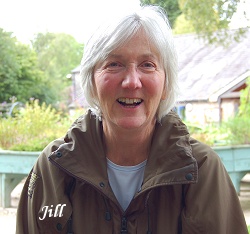 We recorded a respectable total of 63 species
We recorded a respectable total of 63 species 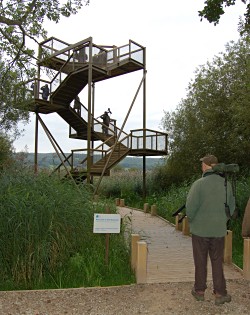 including Marsh Harrier, Marsh Tit, Great White Egret, Bearded Tit, Water Rail, Peregrine and Greenshank but with the added bonus of prolonged close-up views of many birds; something that always appreciated.
including Marsh Harrier, Marsh Tit, Great White Egret, Bearded Tit, Water Rail, Peregrine and Greenshank but with the added bonus of prolonged close-up views of many birds; something that always appreciated.The journey took about 75' from Knutsford to the information centre where we met up with Nick and Jane Davies who had been on holiday in the area plus Jill Thornley one of the founder members of the society and someone we'd not seen for some years, since she and Roger moved north.
The RSPB seemed to have invested quite a bit of money on the reserve since our last visit, the Tim Jackson, Grisedale and Causeway hides have been totally refurbished as has the Allen hide out on the estuary. Pride of place though must go to the new "Sky Tower", an impressive structure about 30ft. high located only about 50 yards from the information centre and giving uninterrupted views right across the reserve. This will be the place to be in the Spring when the Marsh Harriers are displaying and the Bitterns are active!
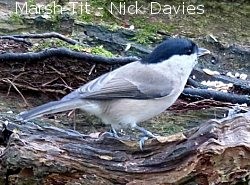 As we made our way to the Jackson hide we came across a photographer who was baiting a fallen log with bird food, right next to the path - so we weren't causing any sort of disturbance, it was attracting Robins, Chaffinches and the local Marsh Tits giving us great close-up views of what is now a rare bird in the Knutsford area, bringing back memories of the pair that nested in Tatton's Dog Wood back in the 1980s. A number of Goldcrests also appeared and they too were in no hurry to move on giving those with cameras an opportunity to run off a few record shots, not an easy task - they don't stay still for more than a split second - no wonder they spend so much time feeding!
As we made our way to the Jackson hide we came across a photographer who was baiting a fallen log with bird food, right next to the path - so we weren't causing any sort of disturbance, it was attracting Robins, Chaffinches and the local Marsh Tits giving us great close-up views of what is now a rare bird in the Knutsford area, bringing back memories of the pair that nested in Tatton's Dog Wood back in the 1980s. A number of Goldcrests also appeared and they too were in no hurry to move on giving those with cameras an opportunity to run off a few record shots, not an easy task - they don't stay still for more than a split second - no wonder they spend so much time feeding!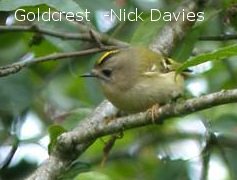
There wasn't much on view from the Jackson or Grisedale hides although we did have out first Little Egret of the day from the first of those. The water level in that area has been deliberately lowered exposing large areas of mud. Apparently the idea is to allow the mud to harden off before re-flooding when the clearer water will encourage reed growth and the return of fish, so providing a better habitat for the Bitterns.
The new Causeway hide proved to be more productive, although it was a lot quieter without the normal noisy Black-headed Gulls we're used to in the Spring! A Great White Egret appeared for a few moments as it commuted between areas of reed, but much more obliging was the Water Rail feeding in front of the hide - much less of a challenge for the photographers than the Goldcrests!
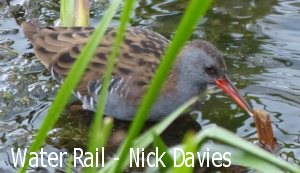 We enjoyed lunch on the picnic tables overlooking the feeding station before moving over to the estuary hides after a quick tour of the shop - they don't stock books anymore - a sign of the times perhaps.
We enjoyed lunch on the picnic tables overlooking the feeding station before moving over to the estuary hides after a quick tour of the shop - they don't stock books anymore - a sign of the times perhaps.Lots of birds on view from both the Allen and Eric Morcambe hides including Black-tailed Godwits, Dunlin, Redshanks and c. 20 Greenshanks, all close to the hides giving excellent views. One particular bird we took to be a Curlew Sandpiper with it's decurved bill and prominent supercilium but were assured by a young man who'd obviously read a lot of books that it was "only" a Dunlin - we're not young enough to know everything!
KOS Homepage...........Latest News.........2015 Archived News